If you’ve been dreaming of a Grecian getaway, you’ve no doubt been pouring over what the country has to offer with stunning pictures of crystal clear waters overlooked by majestic white homes. And whether or not it’s your first time traveling here, you may be wondering which are the best places to visit in Greece, particularly if you’re crunched for time.
With great sightseeing opportunities, excellent food, a vibrant nightlife, and beautiful landscapes, Greece is an excellent vacation spot any time of year. You can even indulge in some extreme sports like kitesurfing and rock climbing. A cruise is also a great way to experience Greece, as it can easily take you from island to island.
With the glitz and glam of vacations on social media, it’s hard to keep your expectations low before taking a trip. In fact, with the stress of travel and unforeseen changes, vacations don’t always go accordingly. Less than half of American travelers found that their last vacation lived up to expectations, according to new research. That was revealed in a survey of 2,000 Americans who have traveled internationally in the past five years, which found only 45 percent of respondents’ vacations lived up to — or exceeded — the perfect picture they’d painted in their minds. Luckily, in Greece, the cliffs and majestic waters really do look as amazing as the photos.
In order to ensure your trip goes swimmingly, we’ve got you covered. With so many great destinations to choose from, how do you know where to head next? Don’t worry, as StudyFinds did the legwork for you by consulting 10 expert websites to come up with this list of the best places to visit in Greece. Tell us which one you want to visit the most in the comments below.

The List: Best Places to Visit in Greece, According to Experts
1. Athens
The country’s ancient capital city is perhaps the best place to visit in Greece. It’s often called the birthplace of democracy and the “cradle of Western civilization.” “Inhabited for more than 3,000 years … The city presents a confusing blend of historical and modern features,” writes Touropia. “Athens is famous for its archaeological ruins and monuments such as the famous Acropolis, the Parthenon, the Ancient Agora and the Theatre of Dionysos just to name a few. However, Athens is not just about ancient ruins. This bustling city is also an important center for business, culture and nightlife.”
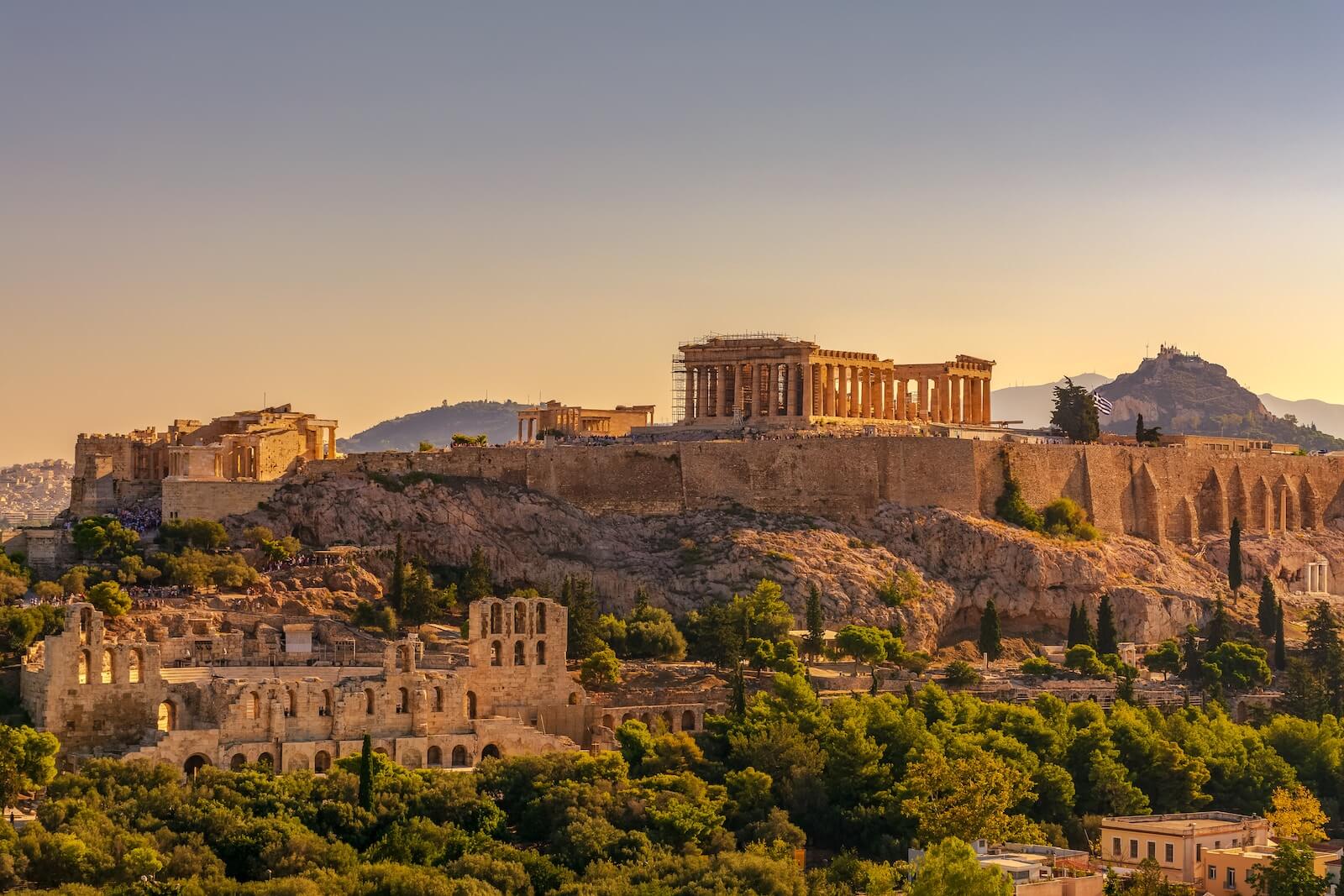
“In higgledy-piggledy Athens – where ancient and modern, nature and civilization, tradition and trends mingle – surprises are hidden around every corner,” states TimeOut. “Traffic-filled roads mask cobbled alleys with bougainvillea-drenched cafés and restaurants. Inside neoclassical buildings, cutting-edge galleries are thriving. … Athens is the cosmopolitan heart of Greece and all of Western culture – you must go at least once in your life.
“An absolute must, of course, is the Acropolis, with its iconic Parthenon and the demure robed maidens (Caryatids) supporting the roof of the Erechtheion temple alongside,” writes Lonely Planet. “Any initiation to ancient Greece should also include the easy walk from the Acropolis down to the Ancient Agora – once the focal point of administrative, commercial, political and social activity, and the spot where Socrates expounded his philosophy. It’s also a snap to loop in other top sites, such as the Temple of Olympian Zeus – its colossal columns reminding us it was the largest temple in Greece – and the Panathenaic Stadium, still in use today. Roman sites include Hadrian’s Arch and the Roman Agora with its evocative Tower of the Winds.”
2. Santorini
With its iconic whitewashed buildings and turquoise waters, Santorini is one of the most popular Greek islands. It’s famous for its cosmopolitan atmosphere and striking natural landscape, which includes beautiful volcanic beaches and historic villages. “Santorini is a top destination in Greece famous for its stunning caldera views, mesmerizing sunsets, a once-in-a-lifetime travel experience,” states Travel the Greek Way.
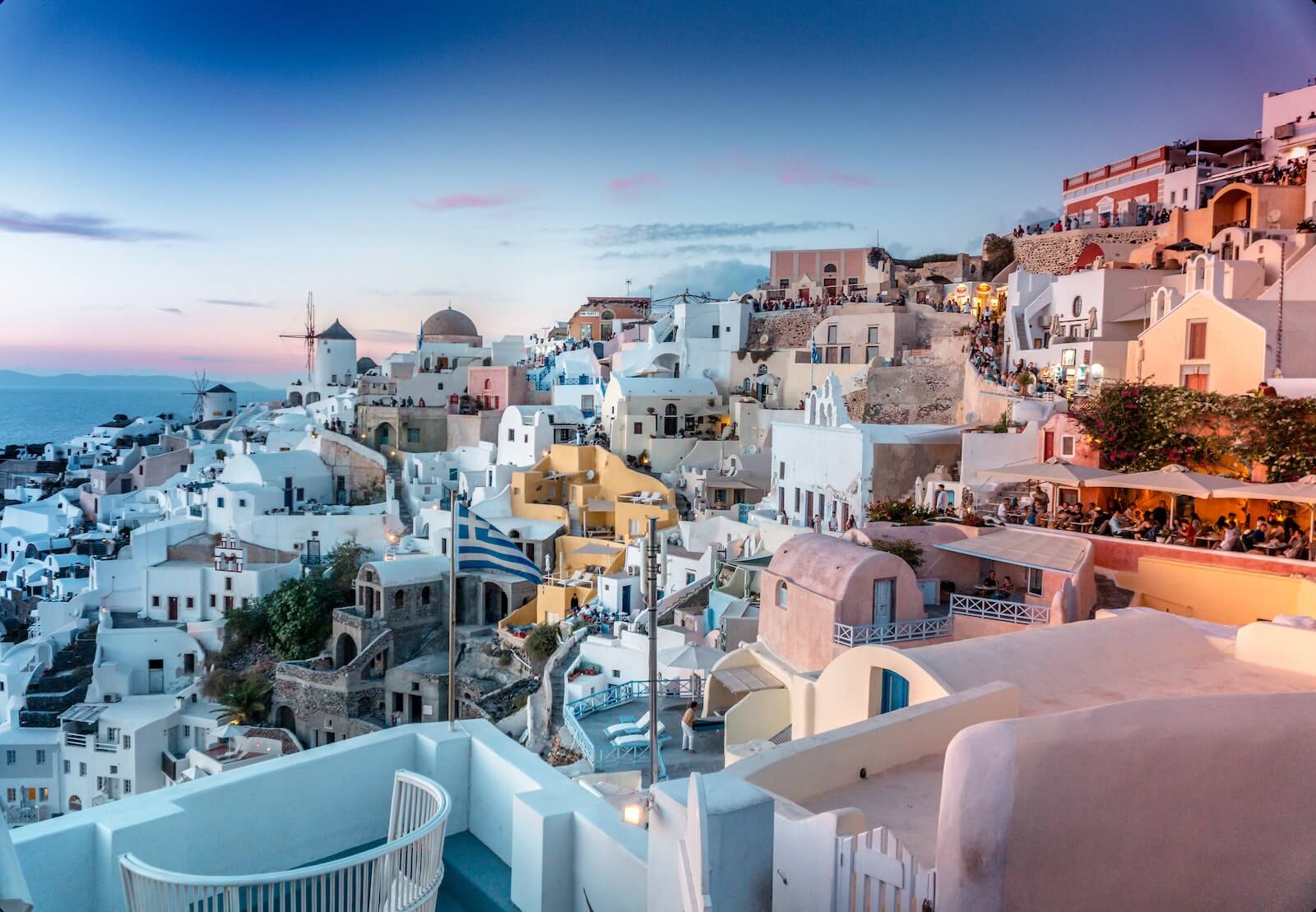
“Picturesque and world-renowned, Santorini must be seen to be believed,” writes Goats On The Road. “Take a dip in the turquoise waters, walk around the beautiful villages and dine in the fine restaurants, Santorini will steal your heart. … From its volcanic beaches and whitewashed houses to its incredible sunsets and scenery, Santorini is most definitely one of the best places to visit in Greece for couples.”
“Santorini is famous for good reason. It’s one of the most beautiful places in the world, has some of the best nightlife in Europe and has a wide selection of fine and casual dining,” gushes Travellers Worldwide. “Yes, it’s quite touristy, but it’s still uniquely Greek. If you visit during the calmer months — April-June and September-October — you can make the most of their warm weather without as many people. The reduced number of tourists means you will have an easier time enjoying Santorini’s beaches and fine wine.”
3. Crete
The country’s largest island – and the fifth largest in the Mediterranean Sea – is one of the best places to visit in Greece because it’s beautiful, has great food, and is full of history. And for beach lovers, there are plenty of picture perfect options to choose from.
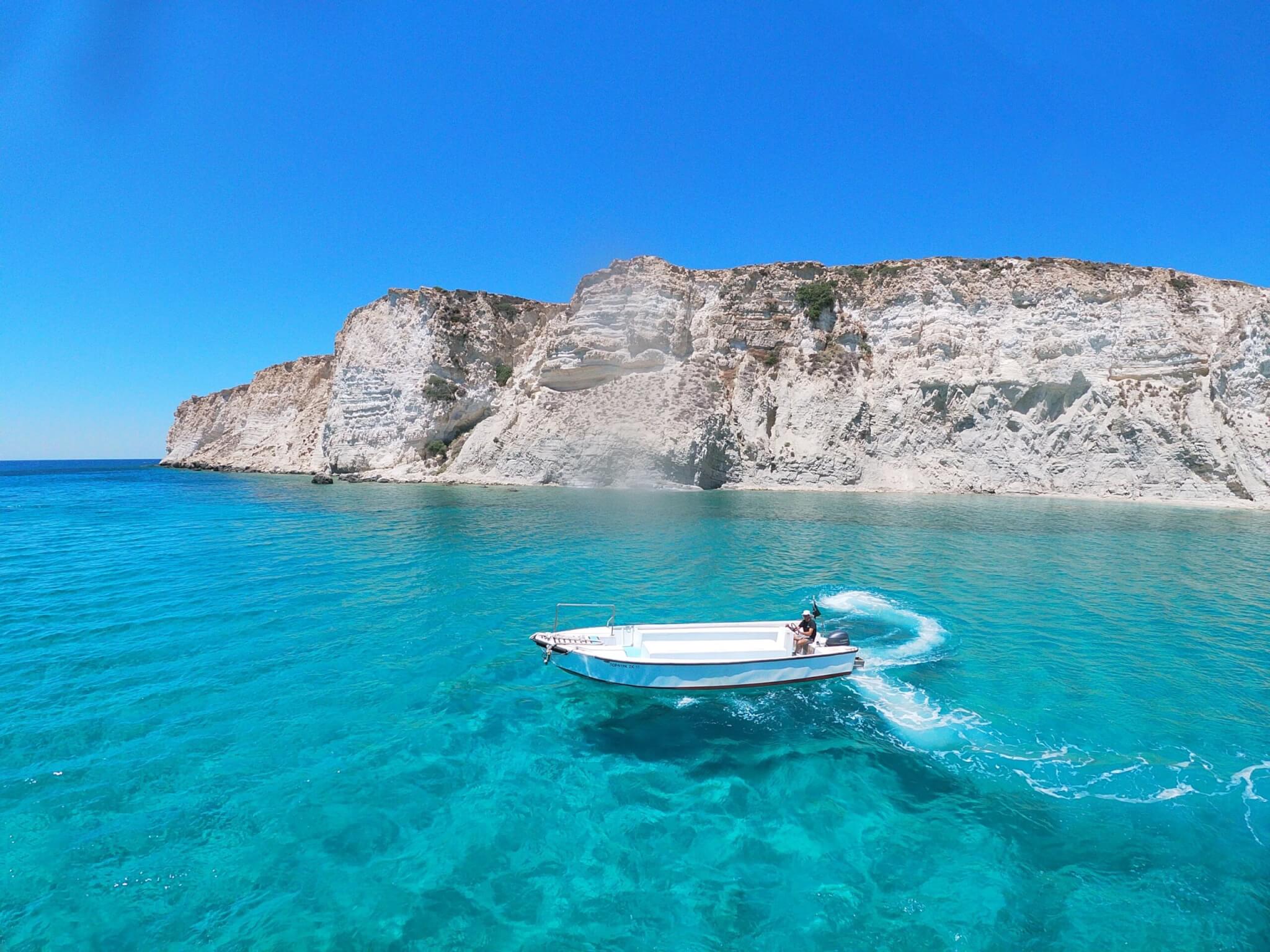
“You’ll need a car to explore Greece’s biggest island, but if you’re after golden beaches, crumbly old towns, world-class museums and UNESCO Heritage sites, Crete ticks every box,” writes TimeOut. “Chania in the west is the liveliest part of the island, while Sitia in the east is famed for its pristine coves and sandy beaches – a perfect rural and picturesque escape. Nature seekers could hike Samaria, Europe’s longest gorge, culture hunters should track down the Minoan palaces, and kids are guaranteed a good time at the island’s countless waterparks.”
“Crete is a spacious land of pleasing contrasts where landscapes range from stunning coastline to rugged mountains and rolling countryside dotted with olive trees,” writes Touropia. “Bustling metropolitan cities spread beyond to quiet villages centered around outdoor coffee shops. Steeped in history, Crete still bears archaeological traces of the many civilizations that inhabited it down through the centuries.”
“Crete is the biggest island in Greece and you will need a few days to visit all it has to offer,” notes The Tour Guy. “It consists of four prefectures: Lassithi, Heraklion, Rethymno, and Chania. Each prefecture has its own points of interest. … Heraklion is a fairly large city with beautiful squares, where you must visit the archaeological site of the Knossos Palace.”
4. Meteora
This UNESCO World Heritage site is a must see for fans of architectural feats and natural wonders alike. Six Orthodox churches, each hundreds of years old, are perched atop cliffs overlooking the villages of Kalambaka and Kastraki.
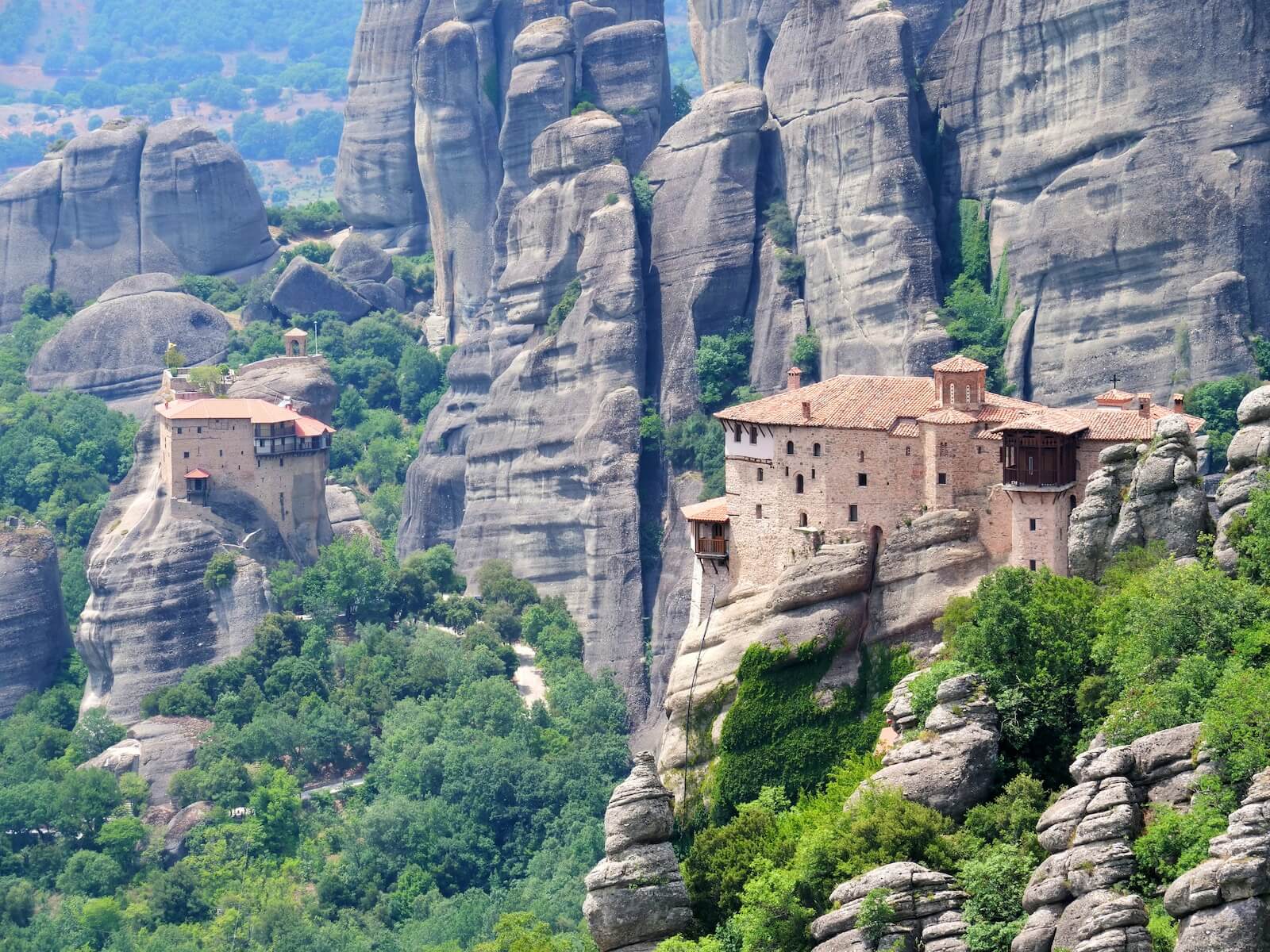
“For unbelievable views, pay a visit to Meteora, located in Thessaly,” suggests Travel + Leisure. “The area is made up of massive rock formations reaching toward the sky. Inside the gorgeous formations sit several monasteries, which made their way onto the UNESCO World Heritage Site list.”
“Once you visit Meteora, you’ll wonder how it’s still a remote destination in Greece,” says Travellers Worldwide. “Located in central Greece, Meteora is home to six monasteries perilously perched on sheer cliffs. … But it’s not just for religious or historical-minded people. Everyone will enjoy spending time gazing at and exploring the magnificent cliffs and monasteries. You can hike up the cliffs to wander around the six mandatories still active today.”
“Meteora is one of the most unique places to visit in Greece, and Europe as a whole,” writes Goats On The Road. “The Meteora Monasteries are one of the few UNESCO world heritage sites that have been given a double status. UNESCO gives two different world heritages status, one for art and one for nature. The stunning bluffs and hoodoos of Meteora have received both. Built in the 14th and 16th centuries, this is a land where fingers of stone reach for the heavens, with Orthodox monasteries perched precariously on the tips. A land where people live in the sky and still worship God with a passion of a bygone age.”
5. Thessaloniki
Greece’s second-largest city has a rich history that’s ever present in its distinct Macedonian feel that shows up in everything from the food to the architecture. The port city offers a lively nightlife and restaurant scene as well as a plethora of monuments, museums, and other activities.
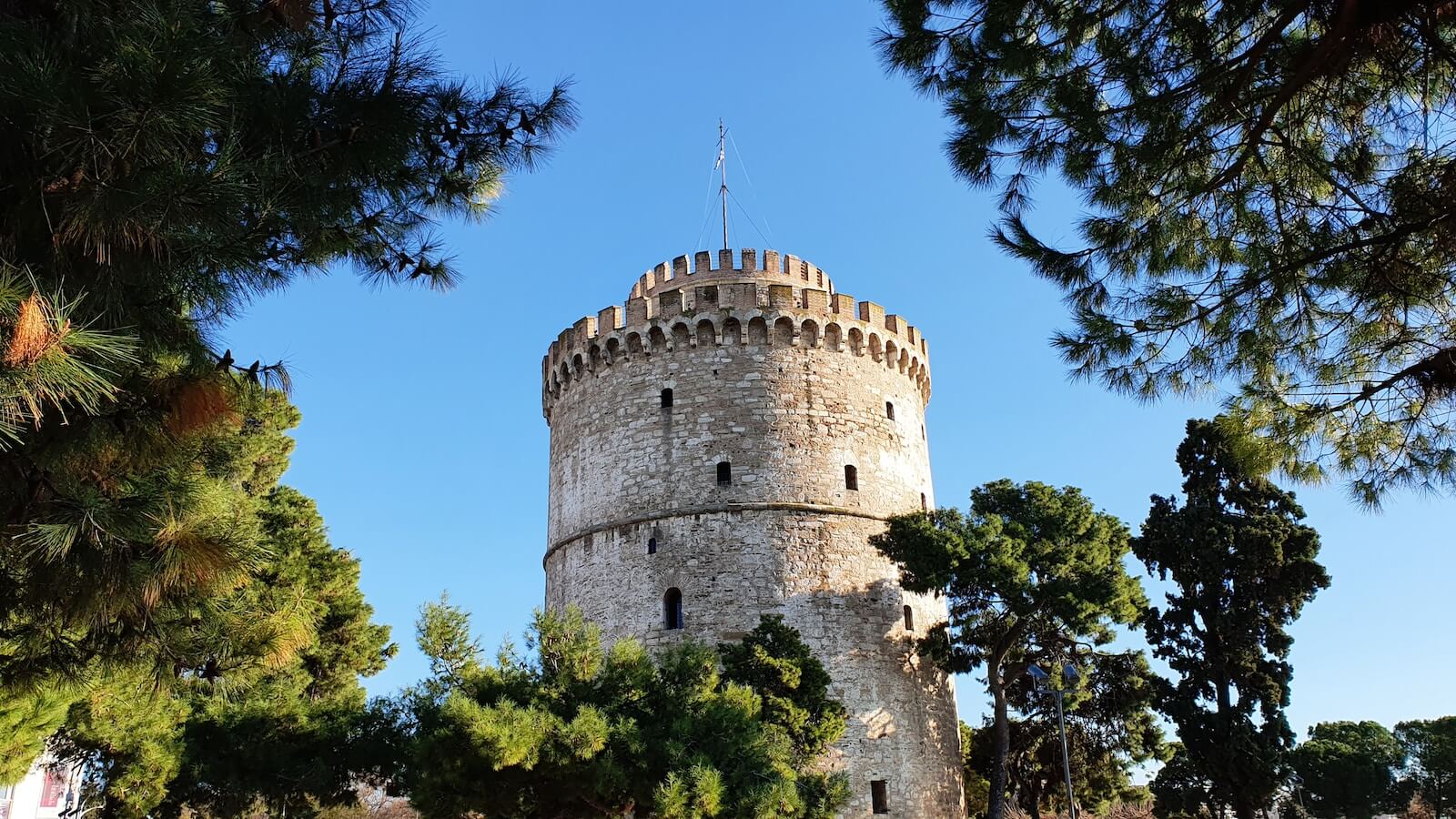
“Lively festivals, social events and a buzzing nightlife make this city the cultural capital of Greece,” writes Touropia. “Comprised of a historic city center and commercial district, Thessaloniki offers both old and new attractions from its Byzantine walls, White Tower and Turkish baths to colorful food markets, museums and art galleries. Thessaloniki’s nightlife is unmatched. From small tavernas to nightclubs and other entertainment venues, Thessaloniki offers it all.”
“Thessaloniki is a modern Greek metropolis with both history and culture. Step back in time as you walk the Byzantine city walls, gaze upon the 4th century Arch of Galerius and explore the ruins of the Roman forum,” states On The Go Tours. “Immerse yourself in contemporary Greece with a walk along the thriving waterfront where trendy cocktail bars stand beside pleasant green spaces and public gardens. The city of Thessaloniki is also an excellent springboard for exploring the gorgeous sand beaches and dramatic mountainous landscapes of the northern Halkidiki region.”
“Once the second city of the Byzantine Empire – and later a thriving Ottoman port city connecting east and west – Thessaloniki has only been part of Greece since 1912. And that really shows,” writes TimeOut. “This place doesn’t feel like Greece you see in tourist brochures: its central market, Kapani, has all the colour and chaos of an Istanbul bazaar, and much Ottoman architecture remains throughout the city centre.”
You might also be interested in:
- Best Greek Food
- Best Cities to Visit in Europe This Spring
- Best Places to Visit in March
- Best Places to Visit in Italy
- Best All-Inclusive Caribbean Resorts
Sources
- Lonely Planet
- The Tour Guy
- Goats On The Road
- TimeOut
- Travel + Leisure
- Travellers Worldwide
- Travel Triangle
- Touropia
- Travel the Greek Way
- On The Go Tours
Note: This article was not paid for nor sponsored. StudyFinds is not connected to nor partnered with any of the brands mentioned and receives no compensation for its recommendations.
